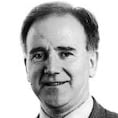Prof Mary Daly of the Mother and Baby Home Commission recently attempted to explain why, in 20th-century Ireland, so many thousands of children were neglected and abused in religious-run institutions, while going seemingly unnoticed by wider society.
"The State was not overseeing adequately what happened in those institutions because of its innate deference" to the Church, she said in RTÉ documentary Rome V Republic. There was, therefore, little accountability.
Those who paid most for that “innate deference” were single mothers and their children. The latter of so little importance at Cork’s Bessborough Home that no one knows where most of the 900 who died between 1922 and 1968 are buried.
The commission found the sisters' affidavit on homes at Bessborough, <a class="search" href='javascript:window.parent.actionEventData({$contentId:"7.1213540", $action:"view", $target:"work"})' polopoly:contentid="7.1213540" polopoly:searchtag="tag_location">Castlepollard</a>, and <a class="search" href='javascript:window.parent.actionEventData({$contentId:"7.1213540", $action:"view", $target:"work"})' polopoly:contentid="7.1213540" polopoly:searchtag="tag_person">Sean Ross</a> Abbey 'in many respects, speculative, inaccurate and misleading'
At the Tuam Home, where 802 children died, remains of many were left to decompose in underground chambers originally intended for sewerage.
Such an “innate deference” explanation is particularly plausible when it comes to the attitude of Galway County Council towards the Tuam Children’s Home from its opening in 1925 until its closure in 1961. It was a period which marked the zenith of the Catholic Church’s power in Ireland.
The symmetry is uncanny. In 1924 the Dáil banned divorce and the selling of artificial means of contraception, prompting WB Yeats’s 1925 Seanad speech where he declared it “tragic that within three years of this country gaining its independence” they should be discussing such measures.
"Innate deference" however would not describe the relationship of Galway's current county council with the Mother and Baby Home Commission.
In its report on Wednesday the commission said it provided the council with “detailed technical reports in June/July 2017 and a first draft of this report in November 2018”, seeking responses. None were forthcoming.
On Thursday the Council said that, as it had provided the commission with “all of the information in its possession”, it “did not make any observations on the reports of the Commission”.
The orders
The Sisters of the Sacred Hearts of Jesus and Mary ran homes at Bessborough, Castlepollard, and Sean Ross Abbey. In their case most burials of children were not recorded.
The commission found the sisters’ affidavit on those homes “in many respects, speculative, inaccurate and misleading”. Currently there are 29 sisters of the Sacred Hearts of Jesus and Mary in Ireland, aged between 70 and 90. Most have returned from the missions.
In a statement yesterday they said they would “continue to deal directly” with the commission “on all related matters. The commission has had and will continue to have our fullest co-operation.”
Of the sisters of Bon Secours just one surviving member served briefly in the Tuam home. Currently there are 93 of the sisters in Ireland, with an average age in the early 70s. The Bon Secours Hospital Group, run by the sisters, is the largest provider of private healthcare in Ireland with hospitals in Cork, Dublin, Galway and Tralee.
The order commissioned its own expert to review the commission report on seeing the draft. That expert suggested it “did not adequately consider the possibility the structure in which the human remains were found was designed as a burial vault”.
In a statement on Wednesday the order said the “commission has examined that report and has rejected its findings, as is their absolute right”.













